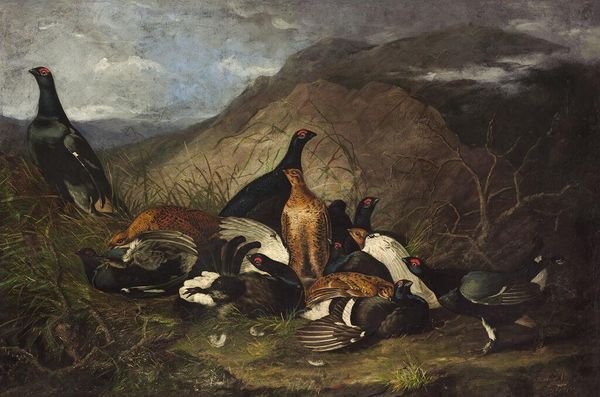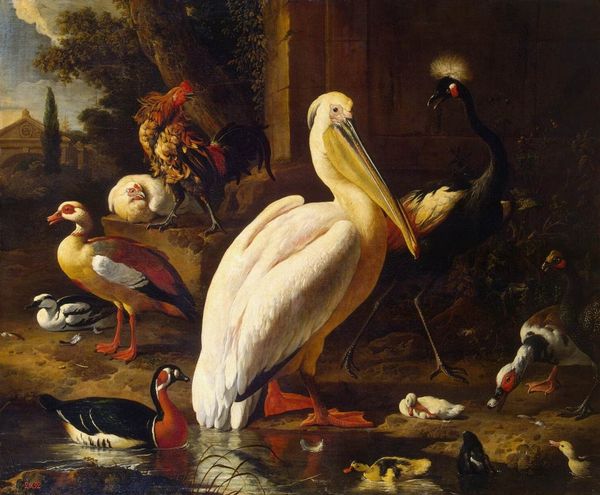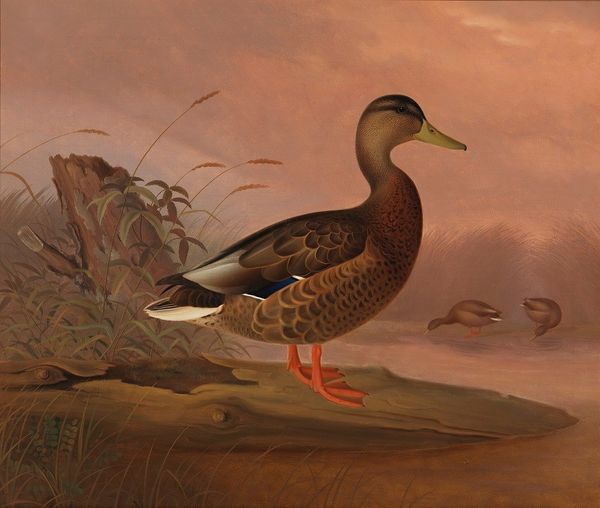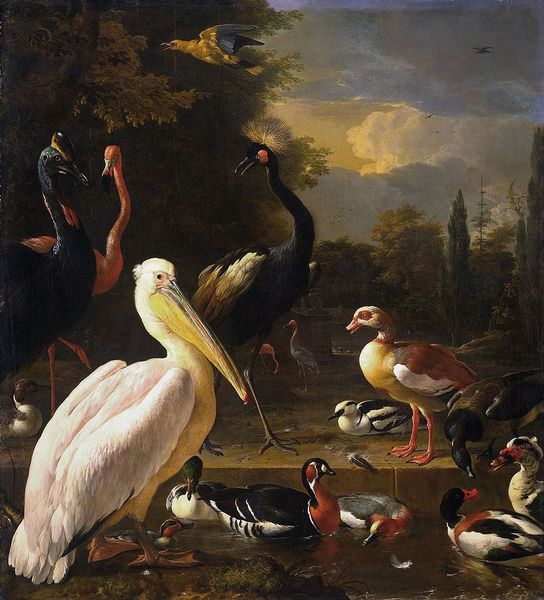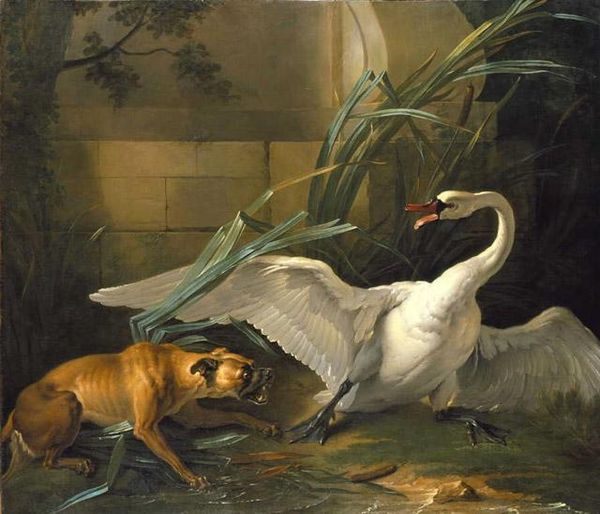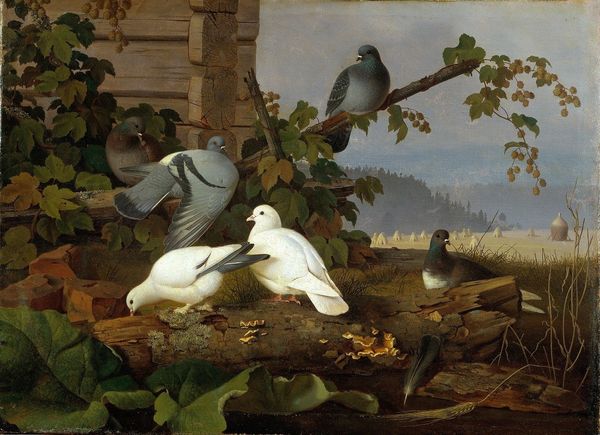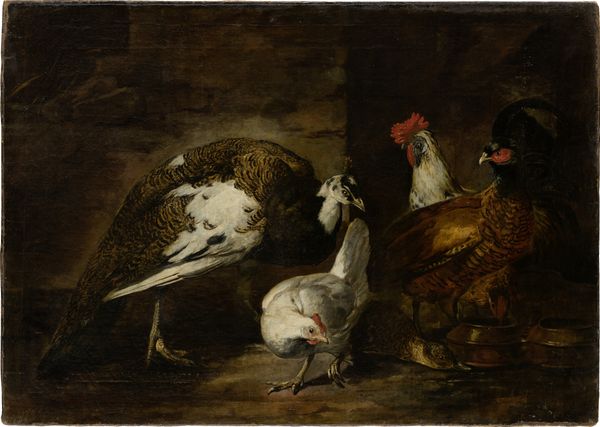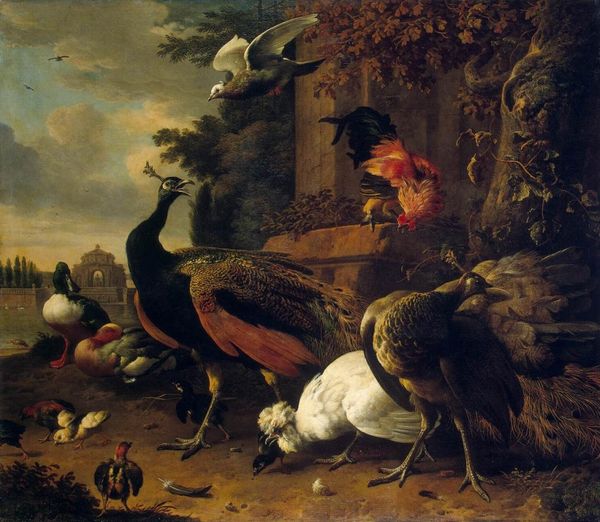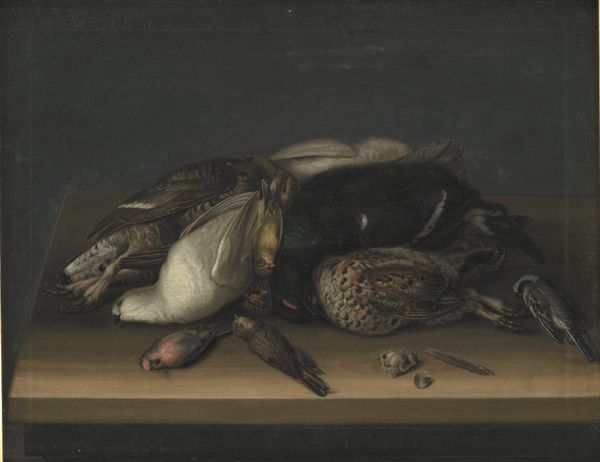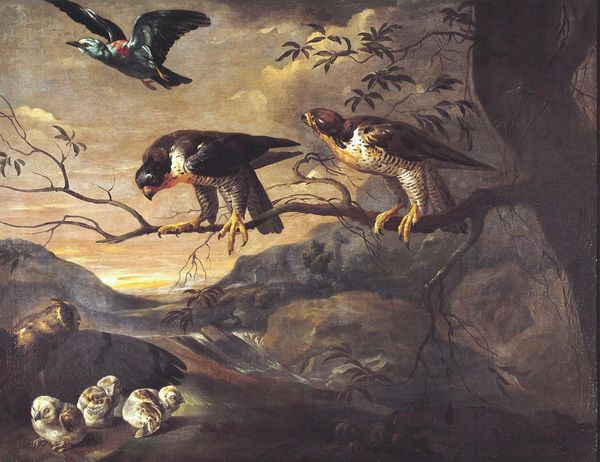
Copyright: Public Domain: Artvee
Ferdinand von Wright captured these eiders with oil on canvas, a medium traditionally associated with fine art. Oil paint’s capacity for rendering minute detail is on full display here. Look at the texture of the female eider’s feathers – a tapestry of browns and blacks achieved through careful layering. The male’s plumage gleams with contrasting blacks and whites, a testament to the artist's skill in manipulating light and shadow. But, in the 19th century, wildlife painting was more closely aligned with natural history illustration than with high art. Artists often worked directly with scientists, documenting new species with exacting precision. The amount of work involved in creating such realistic depictions was considerable, demanding both technical skill and patient observation. This painting reflects the cultural value placed on scientific exploration and documentation during Wright's time. Ultimately, it prompts us to consider the social context in which art is produced and the complex relationship between art, science, and society.
Comments
No comments
Be the first to comment and join the conversation on the ultimate creative platform.
